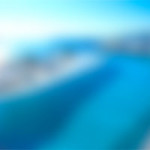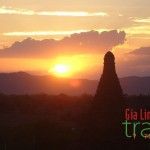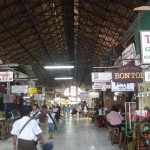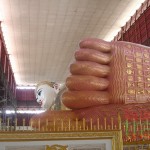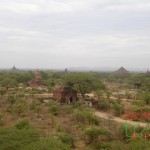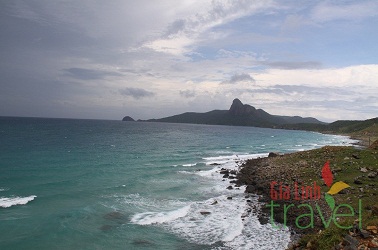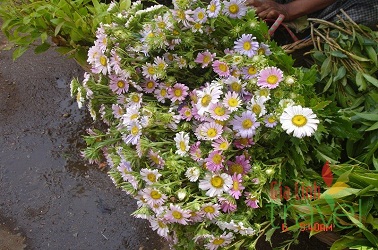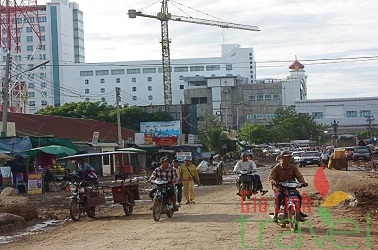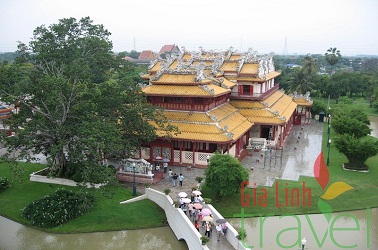Destination: Yangon/Bagan/Mandalay/Kalaw/Inle Lake/Heho/Luang Prabang/Pak Ou Caves/Khuangsi Waterfall/Vientiane
B=Breakfast, L=Lunch, D=Dinner, G=Guide
Day 1: Yangon arrival (G)
Mingalaba! (Welcome) Yangon lies in the fertile delta of the Yangon River and gives the ethereal impression of being full of trees, shade and shimmering stupas floating above the treetops. Our afternoon tour includes the magnificent Shwedagon Pagoda. The highlight of any visit to Yangon, this pagoda dates back about 2500 years and was built to house eight sacred hairs of the Buddha and its bell-shaped superstructure is covered in about 60 tonnes of gold leaf. The National Museum holds several interesting exhibits, including the mammoth Sihasana Lion Throne as well as many treasures and memorabilia of Burmese royalty. The Sule Pagoda has a 48 m/52 yard high golden dome used, when it was rebuilt in the 1880’s, by the British as the nucleus of their grid pattern for the city.
Overnight in Yangon.
Day 2: Yangon (B, L, G)
An interesting experience today includes mingling in the Bogyoke Aung San Market, also known as Scott Market, and its over 2000 little shops. The Kyaukhtatkyi Pagoda contains a gaudy, modern, 70m/76 yard-long reclining Buddha built in 1966 and housed in a formidable iron pavilion. The temple doubles as a monastery as well as a center for the study of Buddhist manuscripts. Mailamu Pagoda has a series of interesting images of the Buddha in his previous incarnations, as well as a lovely reclining Buddha image. Overnight in Yangon.
Day 3: Yangon/Bagan by flight (B, G)
A short flight gets us to Bagan with its spectacular plain dotted with thousands of ancient temple ruins. Although human habitation in Bagan dates back almost to the beginning of the Christian era, Bagan only entered its golden period with the conquest of Thaton in 1057 AD. Our day tour includes Ananda Pahto, one of the finest, best preserved and most revered of the Bagan temples thought to have been built around 1105, and Shwegugyi temple, built in 1311. We also visit Thatbyinnyu Pahto, Nathlaung Kyaung, Bagan’s only Hindu Vaishnavite temple, and the Pahtothamya. Gawdawpalin Pahto is one of the largest and most imposing of the Bagan temples, and its name literally means “platform on which homage is paid”. Bupaya is a cylindrical Pyu-style stupa said to be the oldest in Bagan; Local residents claim it dates to the 3rd century. The distinctively shaped bulbous stupa stands above rows of crenellated terraces making for a splendid sight. Overnight in Bagan.
Day 4: Bagan (B, L, G)
Our excursion to Mount Popa, was last active 250,000 years ago, shows an interesting picture of countryside life. We also visit Salay famous as the historic home of Salay U Ponya, a Bagan Era writer/poet. We visit many interesting sites including Payathonzu which is an interconnected complex of three brick shrines, Thadanayaunggyi Kyaung, an ancient monastery in continuous use for several hundred years, and Mogok Vipassan Yeiktha, a meditation center. We will also have the opportunity to see Nan Paya, home to a large lacquer Buddha dating back to the 13th century, and an old brick-and stucco Buddhist scripture library bearing an intact superstructure. We culminate the day with a visit to Youqson Kyaung, the oldest surviving wooden monastery hall in the Bagan area. Overnight in Bagan.
Day 5: Bagan/Mandalay by road (B, L, G)
This morning we depart by road to Mandalay, the last capital of Myanmar before the British took over. Mandaly is of great importance culturally and historically and is the most “Burmese” of the Myanmar’s large cities. Mandalay’s Buddhist monasteries are among the most important in the country – about 60% of all the monks in Myanmar reside in the Mandalay area. The city takes its name from Mandalay Hill that rises to the north east of Mandalay Fort and is home to a marvelous royal palace. Overnight in Mandalay.
Day 6: Mandalay (B, L, G)
Constructed in 1857, Mandalay Fort (Fort Dufferin) is an imposing walled palace compound encircled by an impressive moat. We get a picture of history here and then again at the Mandalay Museum and Library known for it’s large collection of Mandalay regalia, royally commissioned art and palm-leaf manuscripts that were formerly housed in the palace. Next we visit the Kyauktawgyi Pagoda home to a huge seated image of the Buddha carved from a single block of marble, the Sandamani Paya, a cluster of slender whitewashed stupas and the Shwenandaw Kyaung, a fine example of a traditional Burmese wooden monastery and a fragile reminder of the old Mandaly Fort. Overnight in Mandalay.
Day 7: Mandalay (B, L, G)
Another interesting day as we visit the one time capital of Inwa followed by Sagaing and Amarapura where we visit Nanmyin, Maha Aungmye Bonzan, and Bagaya Kyaung, a monastery built of teakwood and supported by 267 teak posts. Sagaing is widely regarded as the religious center of Myanmar and is popularly known as ‘Little Pagan’ as the Sagaing ridge is crowded with around 600 pagodas and monasteries where more than 3000 monks reside. We also visit Thabyedan Fort and Kaunghmudaw Paya , Sagaing’s most important temple built in 1636, Tupayon Paya with its unique architecture and Hsinmyashin Paya, known as the Pagoda of Many Elephants. Amarapura means City of Immortality, however its period as capital was brief. We visit Pahtodawgyi, and Bagaya Kyaung – a museum and library known for its collection of palm-leaf manuscripts. Overnight in Mandalay
Day 8: Mandalay/Kalaw (B, L, G)
Our destination today is Kalaw, a popular hill station in the British days. Kalaw sits high on the western edge of the Shan Plateau and is still a peaceful and quiet place with an atmosphere reminiscent of the colonial era. The small population is a mix of Shan, Indian Muslims, Bamar and Nepalis making for an interesting cultural experience. Our afternoon tour includes Aung Chang Tha Zedi, a glittering stupa covered in gold-colored mosaics, Dhamma Yon, a two-story temple provides a fair view of the town, Dhamma Yanthi Paya and the ruins of the Hsu Taung Pye Paya. Nee Paya, and Christ The King Church, wrap up our days sightseeing. Overnight in Kalaw.
Day 9: Kalaw/Inle Lake (B, L, G)
An interesting drive takes us to Inle Lake, located in Shan State. The lake is beautiful, with its serene waters dotted with patches of floating vegetation and fishing canoes. High hills rim the lake on both sides creating a cozy and tranquil setting. The lakeshore and lake islands bear 17 villages on stilts, mostly inhabited by the unique Intha people.
Overnight in Inle Lake.
Day 10: Inle Lake/Heho/Yangon (B, L, G)
This morning, we enjoy a refreshing boat trip on the serene Inle Lake followed by a scenic drive to Helo to catch our flight back to Yangon. Overnight in Yangon.
Day 11: Yangon/Bangkok/Luang Prabang (B, G)
We bid farewell to Myanmar, Burma. This morning transfer to the airport for flight to Luang Prabang via Bangkok. Luang Prabang, the ancient capital city of the Lan Xang Kingdom. Overnight in Luang Prabang
Day 12: Luang Prabang (B, L, G)
After breakfast, we enjoy a short-guided tour seeing the city’s oldest temple of Wat Sene and the magnificent Wat Xiengthong with its roofs sweeping low to the ground, which represents classical Laotian architecture. During our time here, we visit the impressive stupa of Wat Visoun and the shrine of Wat Aham, Wat Mai, we then climb up to the top of Mount Phousi for an enjoyable exploration of the sacred, gilded stupa as well as a panoramic view of the city at sunset and the Mekong River. From there, we explore the Night Market, where you can find a lovely selection of handmade textile made by local and hilltribe people surrounding Luang Prabang. Overnight in Luang Prabang
Day 13: Luang Prabang/Pak Ou Caves (B, L, G)
Today, We then embark on a cruise upstream on the Mekong River, which also gives us a breathtaking view of the tranquil countryside as well as explore the mysterious Pak Ou Caves, two linked caves crammed with thousands of gold lacquered Buddha statues of various shapes and sizes left by pilgrims. Along the way, we stop at the village of Ban Xanghai, where they make the local rice wine. On return, we disembark traditional villages, visiting Ban Xienglek and Ban Xangkong, the villages of handmade jute paper making and continue taking a short drive to Ban Phanom, a village well known for its hand weaving. Overnight in Luang Prabang.
Day 14: Luang Prabang/Khuangsi Waterfalls (B, L, G)
An optional early start gives you the fantastic opportunity to participate in the daily morning rituals of saffron-clad monks collecting offerings of Alms (ubiquitous sticky rice) from the faithful residents. This tradition is very unique in Laos, being the only Buddhist nation still preserving the procession. From there you will visit the morning Phosi Market, where you will see such diverse offerings as dried buffalo skin, local tea and saltpeter among the chickens, vegetables and hill-tribe weavings. Laos is also known for its traditional crafts, and today you will visit local villages of Lao ethnic minority groups at Ban Ouay, Hmong Village, Ban Ou, Laoloum Village and Ban Thapene, Khmu Village, then drive to the beautiful Khouangsi Waterfall where you can cool off with a refreshing swim in the turqoise pools or walk along the forest trails. After returning to Luang Prabang by late afternoon, we continue to Ban Xangkhong, a village well known for its silk weavings and for its Saa (jute) Papermaking. We return to the city by late evening to observe the sunset at Wat Siphouthabath. Overnight in Luang Prabang
Day 15: Luang Prabang/Vientiane by flight (B, G)
The National Museum (close Tuesday) at the former Royal Palace, displays a lovely collection of artefacts reflecting the richness of Lao culture dating from the days of the early kings right through the last sovereign. The National Museum and the Central Market is not to be missed. We visit these sights in the morning before catching our flight back to Vientiane. Upon arrival in Vientiane, we see the major sights of the capital; including the oldest Wat Sisaket, the temple with thousands of miniature Buddha statues and the former royal temple of Wat Prakeo, which previously housed the famous Emerald Buddha Image. On the way to Lao’s national precious heritage, the famous and sacred structure of That Luang Stupa, we stop enroute to take some pictures of the imposing Patuxay Monument, which is well known as Vientiane’s own Arc de Triumph. We watch the sunset by Mekong Riverside and spend the evening here absorbing the city’s nightlife. Overnight in Vientiane
Day 16: Vientiane departure (B, G)
After breakfast, we visit the Morning Market and the weaving village of Ban Nong Bouathong (if time permits). The tour ends after your transfer to airport for departure.
